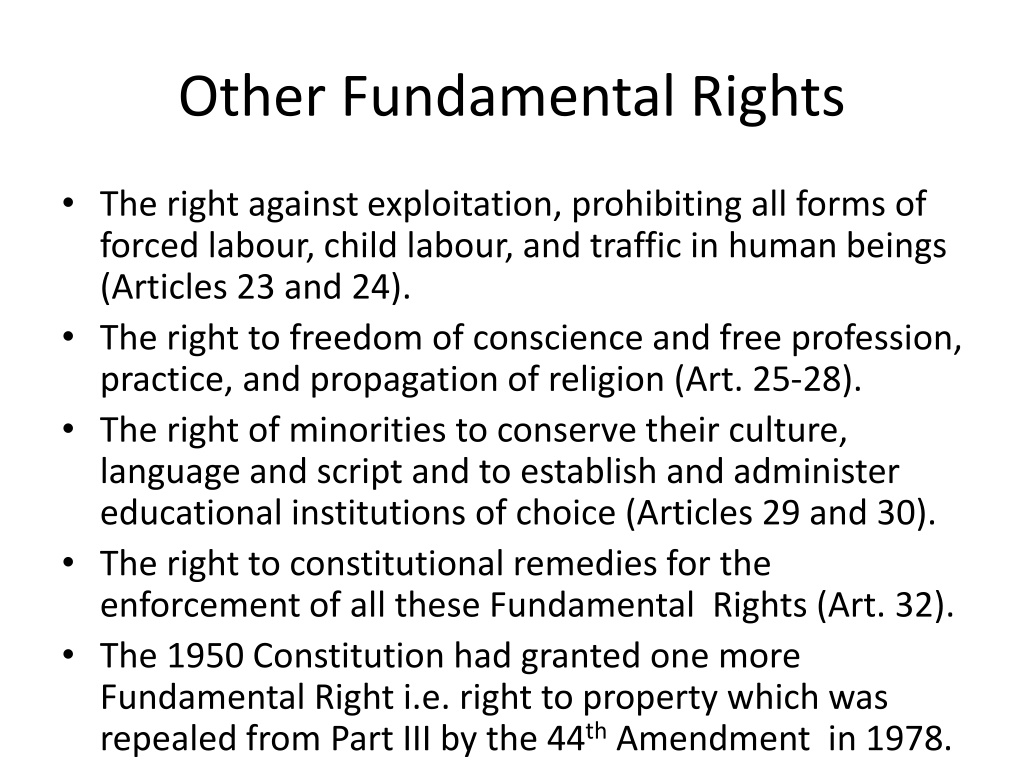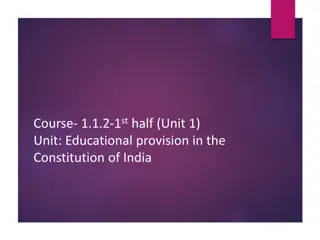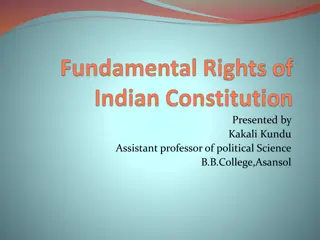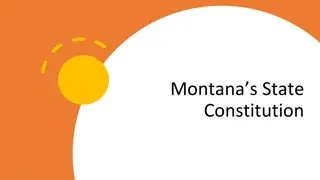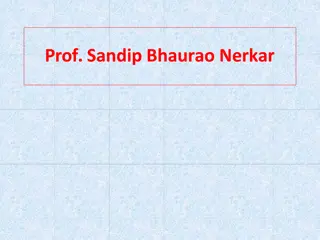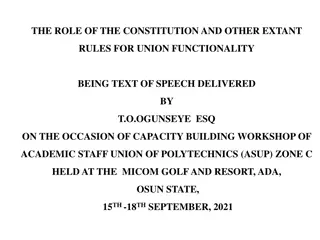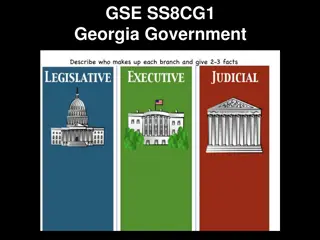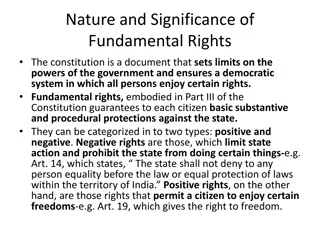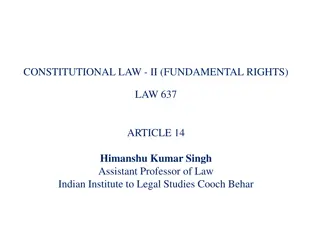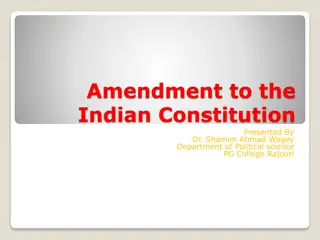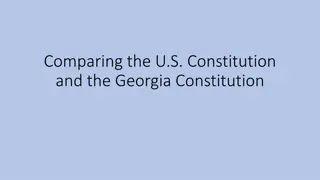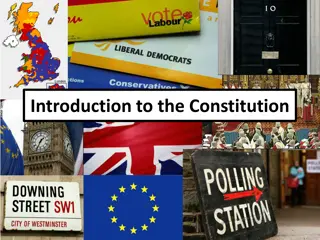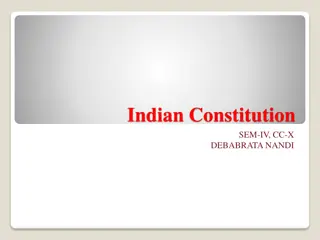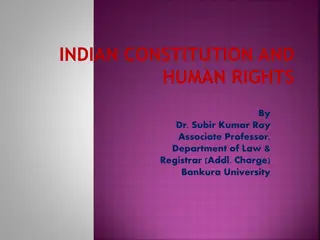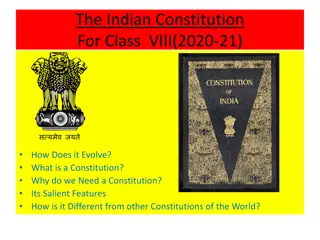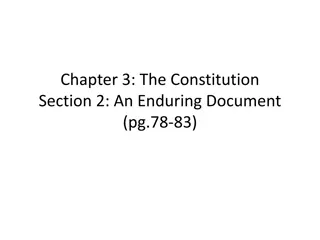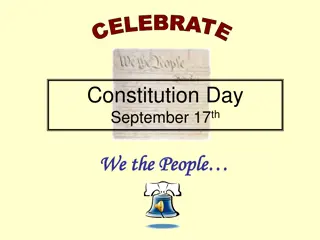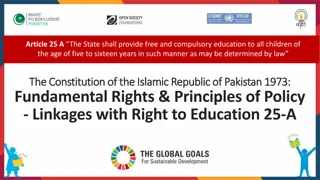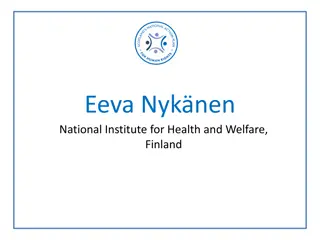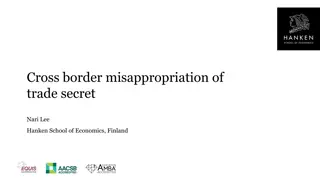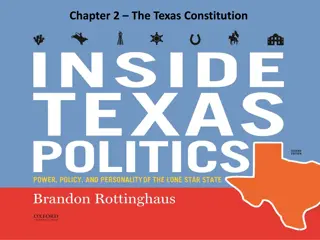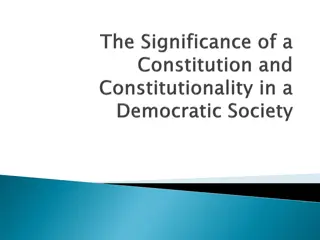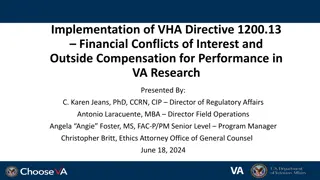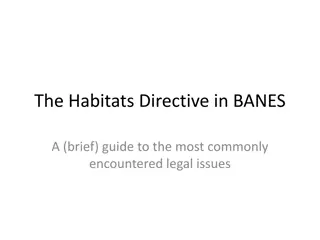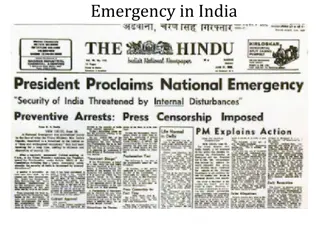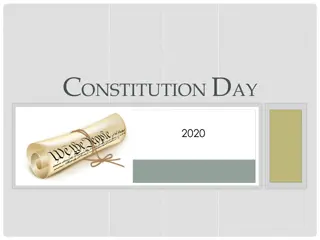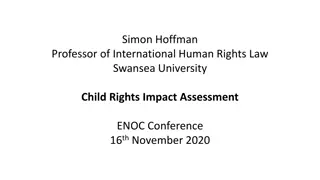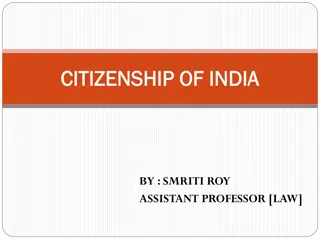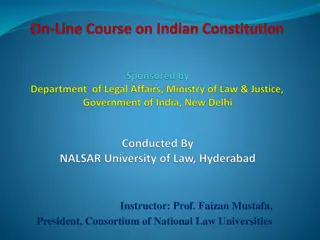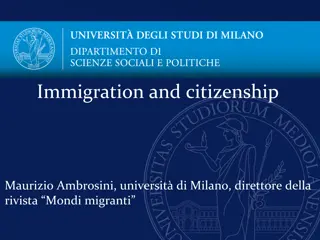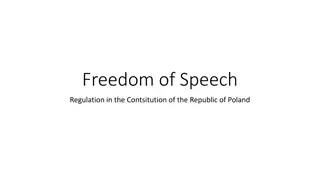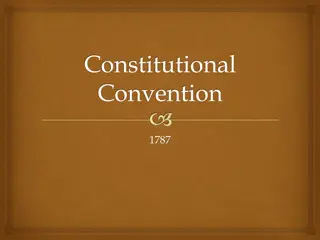Fundamental Rights and Directive Principles of State Policy in Indian Constitution
The Indian Constitution guarantees Fundamental Rights such as the right against exploitation, freedom of conscience, and the right of minorities. It also includes Directive Principles of State Policy (DPSP) to guide the government in promoting social welfare. Fundamental Rights and DPSP are meant to complement each other, with Fundamental Rights protecting individuals and DPSP focusing on the well-being of society as a whole, though conflicts can arise between them.
Download Presentation

Please find below an Image/Link to download the presentation.
The content on the website is provided AS IS for your information and personal use only. It may not be sold, licensed, or shared on other websites without obtaining consent from the author. Download presentation by click this link. If you encounter any issues during the download, it is possible that the publisher has removed the file from their server.
E N D
Presentation Transcript
Other Fundamental Rights The right against exploitation, prohibiting all forms of forced labour, child labour, and traffic in human beings (Articles 23 and 24). The right to freedom of conscience and free profession, practice, and propagation of religion (Art. 25-28). The right of minorities to conserve their culture, language and script and to establish and administer educational institutions of choice (Articles 29 and 30). The right to constitutional remedies for the enforcement of all these Fundamental Rights (Art. 32). The 1950 Constitution had granted one more Fundamental Right i.e. right to property which was repealed from Part III by the 44thAmendment in 1978.
Directive Principles of State Policy The Constitution makers knew that independent India was going to face many challenges. One of the formidable challenges among these was the challenge to bring about equality and well-being of all citizens. It was also their considered view that certain policy direction was required for handling these problems. But at the same time, the Constitution did not want future governments to be bound by certain policy decisions. Thus, some guidelines were incorporated in the Constitution but they were not made legally enforceable. So these guidelines are non-justiciable parts of the Constitution which cannot be enforced by the judiciary. Nonetheless, the framers of the Constitution strongly believed that the moral force behind these guidelines would ensure that the government would take them seriously.
DPSP- Three Important Aspects There are three important features in the chapter on Directive Principles which are as follow: i. The goals and objectives that we as a society should adopt (welfare of the people: social, economic and political justice; raising the standard of living: equitable distribution of resources; promotion of international peace); ii. Certain rights that individuals should enjoy apart from the Fundamental Rights (right to education, partial right to work under employment guarantee programme and the mid-day meal scheme etc.); and iii. Certain policies that the government should adopt (uniform civil code, prohibition of consumption of alcoholic liquor, promotion of cottage industries, prevention of slaughter of useful cattle and promotion of village panchayats). To sum up DPSP hold the key to the vision of the makers of our Constitution.
Fundamental Rights and DPSP Both Fundamental Rights and DPSP need to be considered as complementary to each other. When Fundamental Rights restrain the government from doing certain things the DPSP exhort the government to do certain things. Fundamental Rights mainly protect the rights of individuals while DPSP ensure the well-being of the entire society. However, there can be situations when government intends to implement DPSP it can come in conflict with the Fundamental Rights of the citizen. For example, this problem arose when the government sought to pass laws to abolish zamindari system. Such measures were opposed on the ground that they violated right to property. But keeping in mind the societal needs that are greater than the individual interests, the government amended the Constitution to give effect to DPSP which led to a long legal battle between the executive and the judiciary.
The Supreme Courts Approach to the Interpretation of DPSP The Supreme Court has been handing down changing verdicts on the question if the DPSP can supersede Fundamental Rights. The changing trends in judicial verdicts can be summarized as follow in terms of different phases: i. First phase (1951-66)- Directive Principles as subordinate to Fundamental Rights. Several states passed laws to give effect to the provisions of the DPSP, but many such laws were challenged in the courts of law on the ground that they were violating the FUNDAMENTAL Rights of individuals. ii. The Second Phase (1967-71): Fundamental Rights as Sacrosanct. Judiciary struck at the Parliament s power to amend the Constitution- (Golak Nath case)
The Supreme Courts Approach .(Contd.) iii. The Third Phase (1972-75)- Amendment of Fundamental Rights for Implementation of the DPSP. The 24thconstitutional amendment (1971) gave Parliament full constituent power over the constitution for addition, variation or repeal . The 25thamendment (1971) added a new clause Article 31 C, which provided that no law giving effect to the DPSP specified in Art. 39 (b) and (c) could be deemed void for being inconsistent with the fundamental rights in articles 14, 19 and 31. In Keshavanand Bharti, the court upheld the 24thand 25th Amendments, but struck down the escape clause and restricted Parliament s power to amend the Constitution by propounding the basic structure doctrine .
